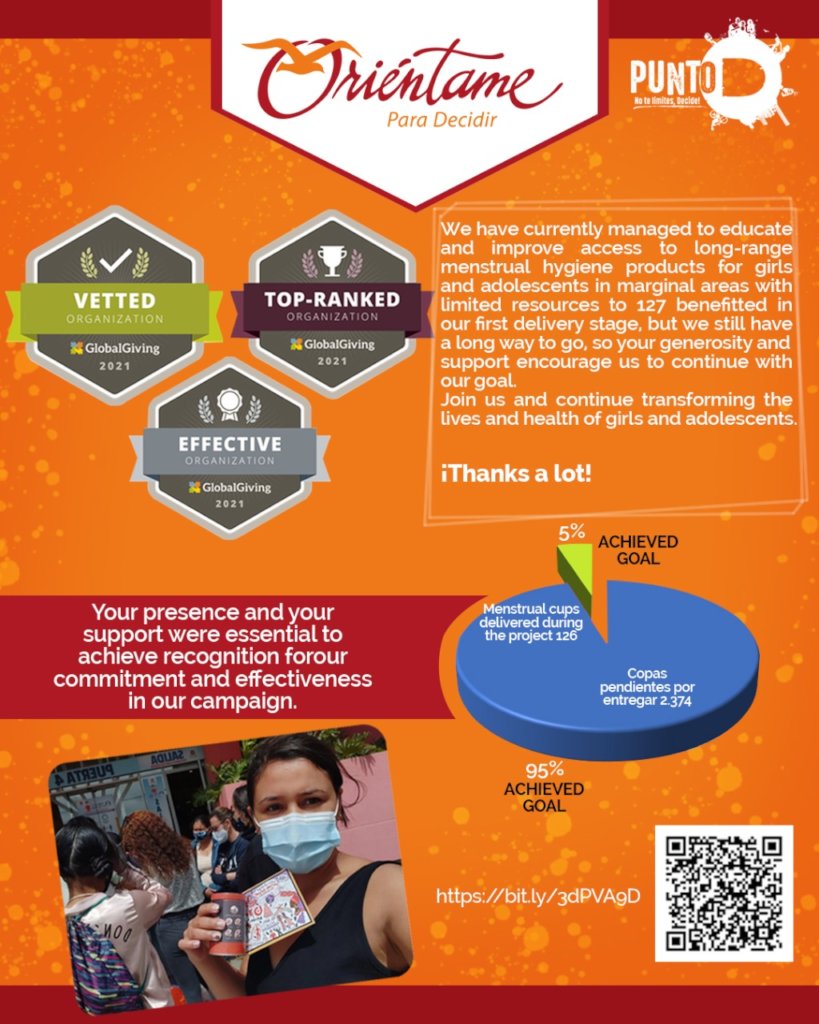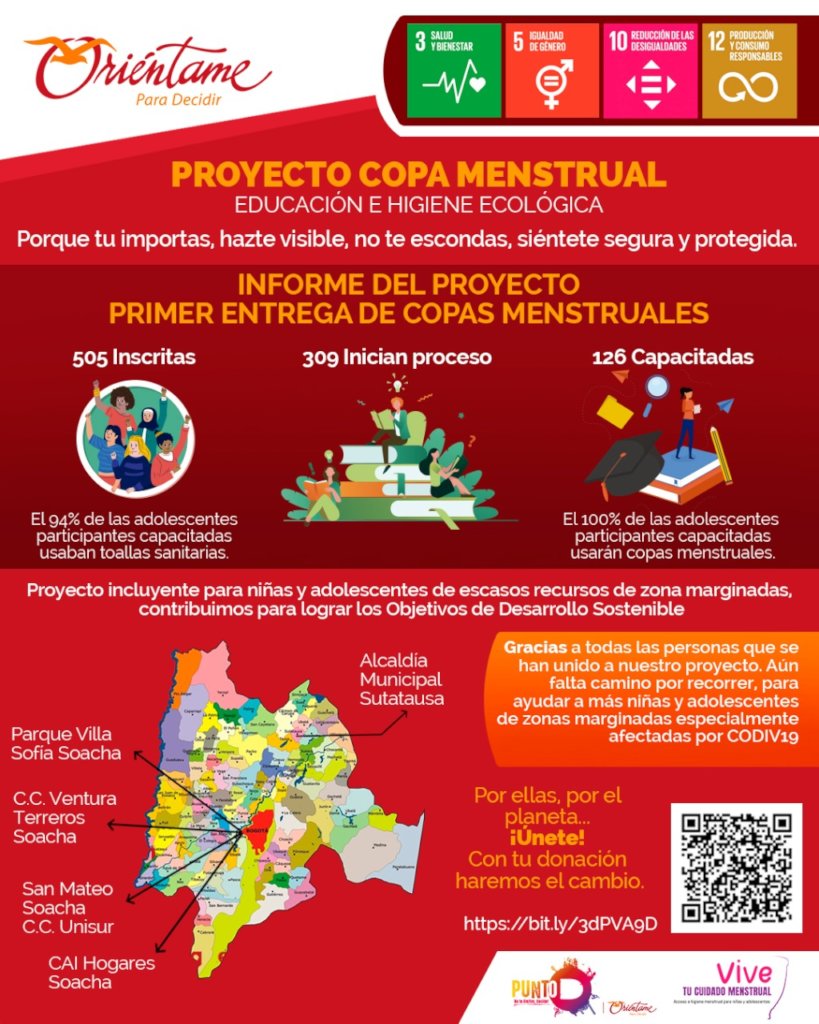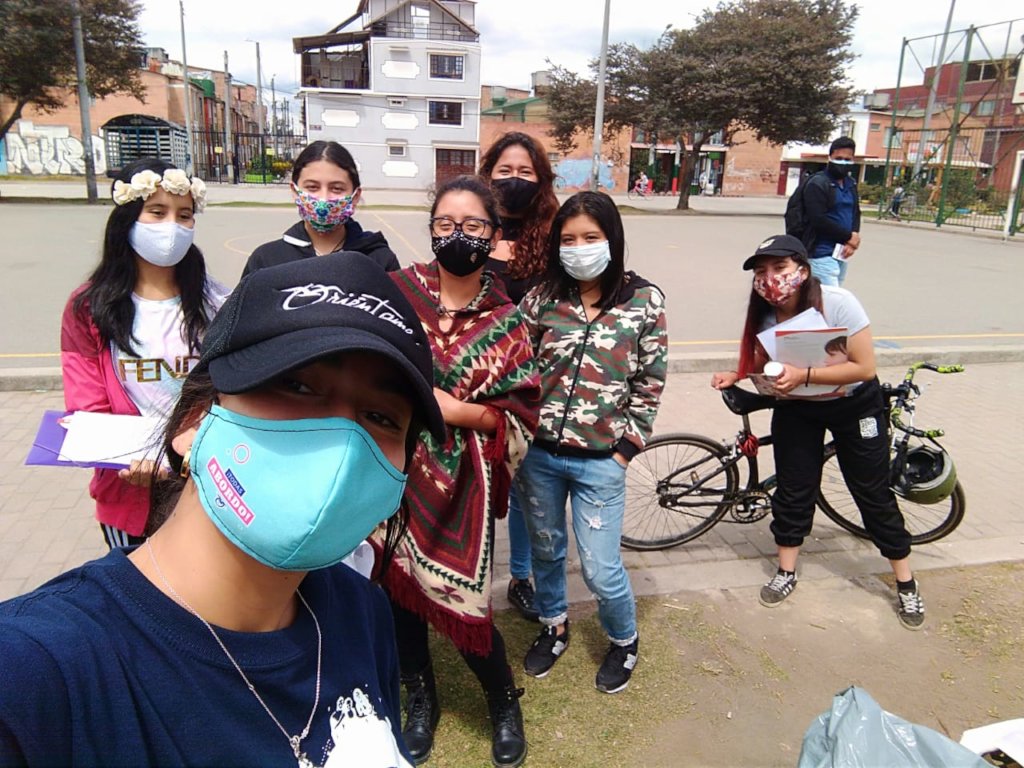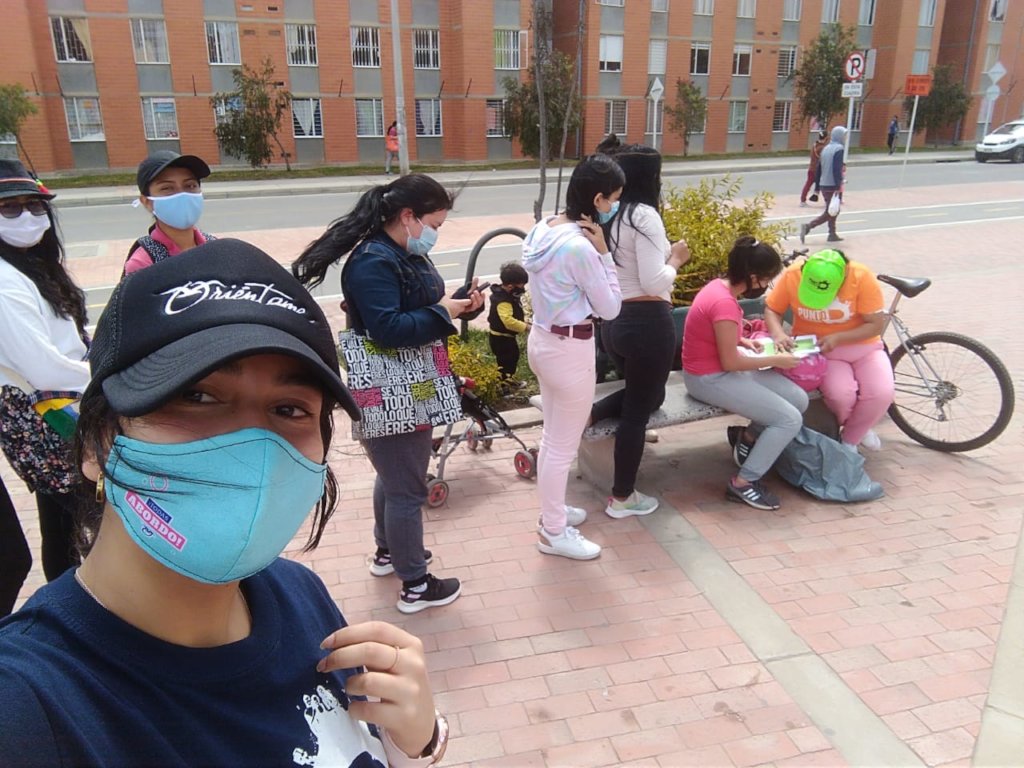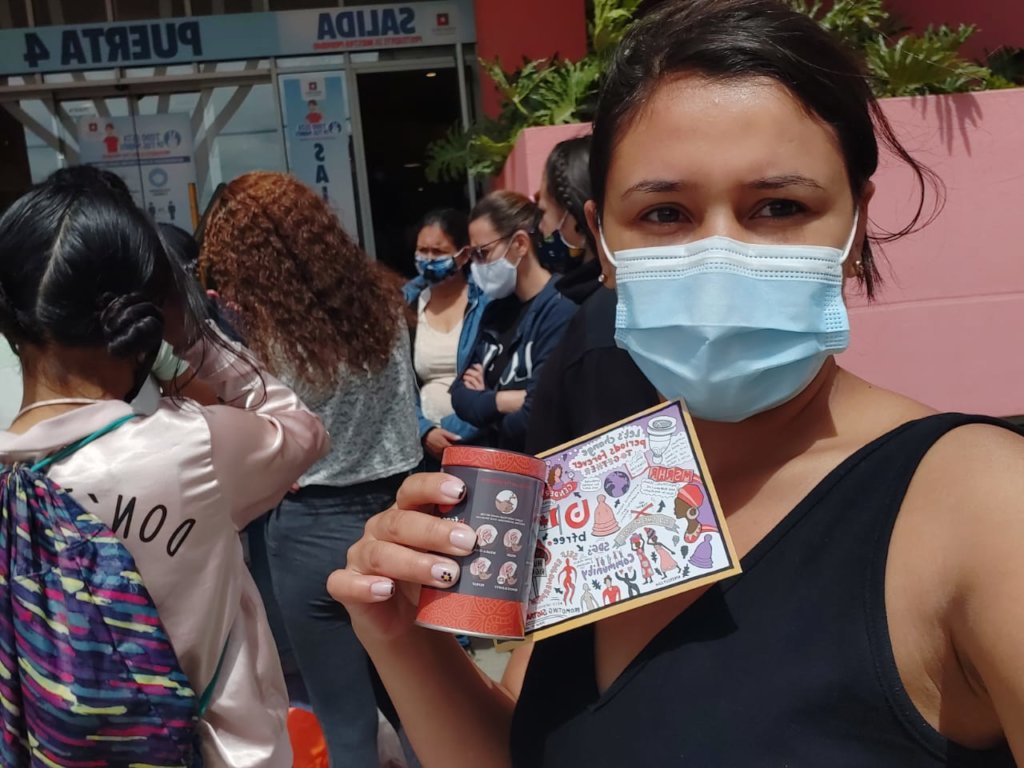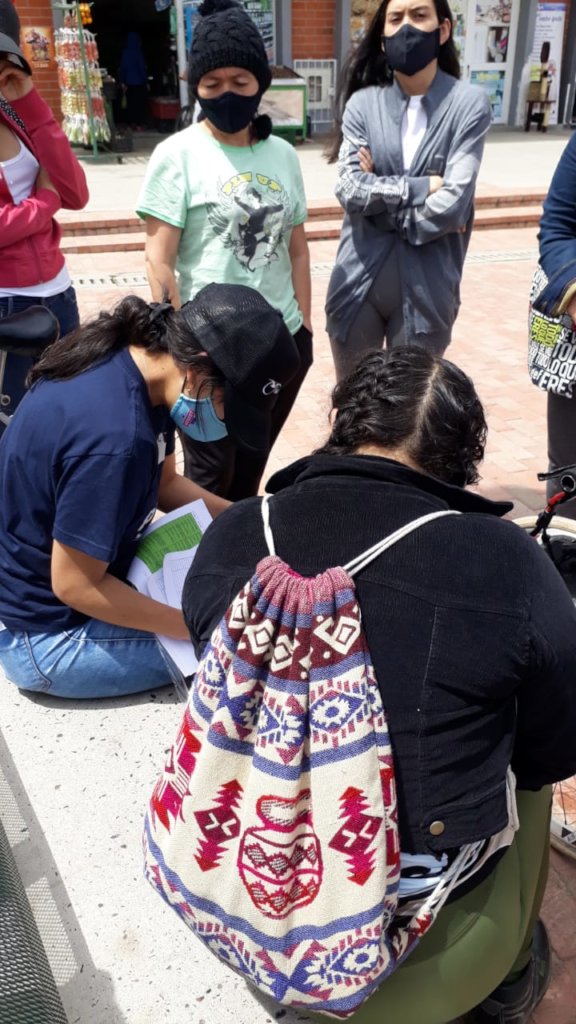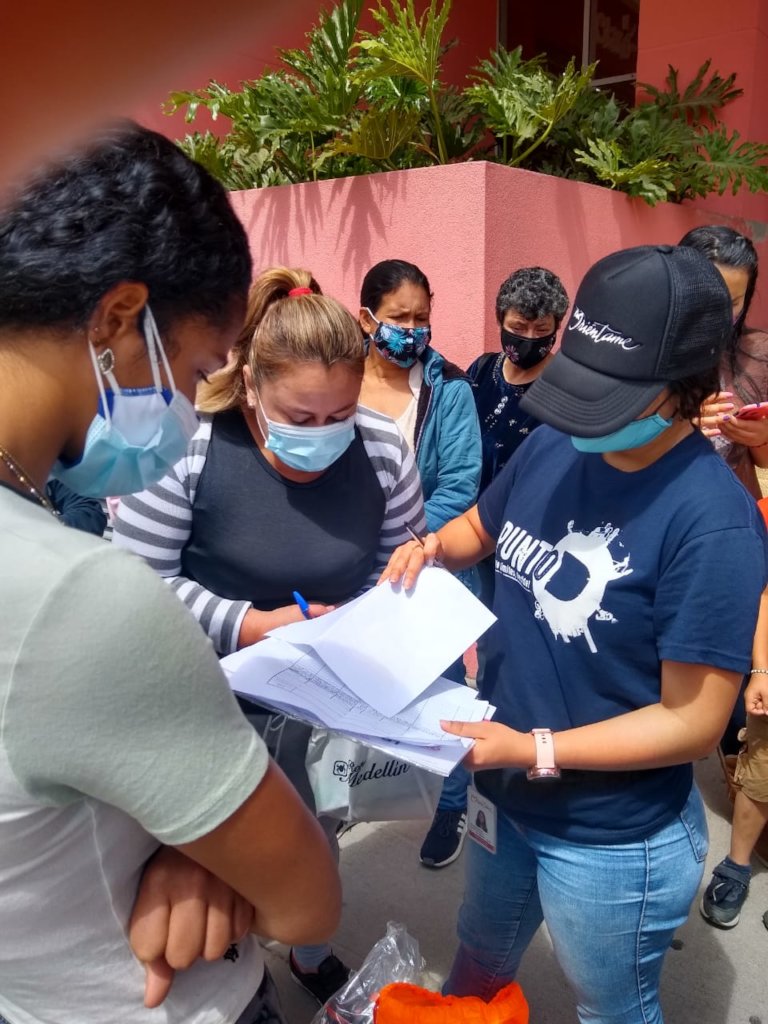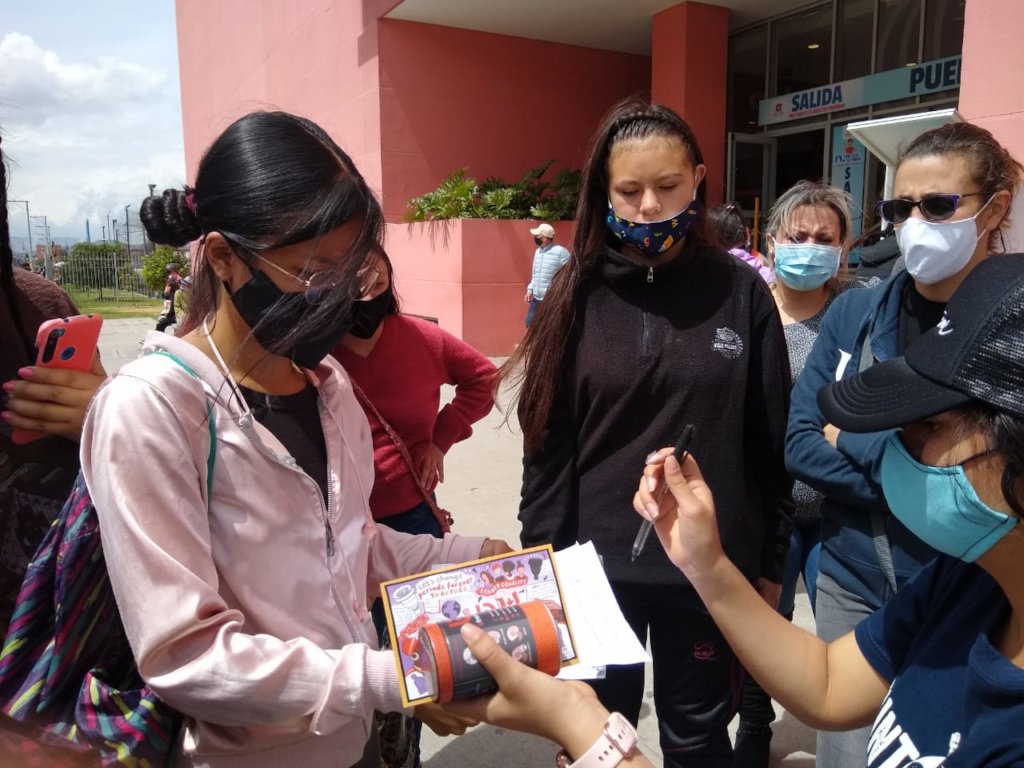By Lady Alba | Coordinadora area de capacitacion y proyectos
NARRATIVE REPORT FORMAT
1. GENERAL INFORMATION:
2. OBJECTIVES OF THE PROJECT:
3. ACTIVITIES CARRIED OUT:
During the period between October 7th and December 20th, the planning process for the project activities was outlined, and the execution of activities started:
3.1 To develop educational content and didactic exercises for training sessions on menstrual care, hygiene, and self-care.
3.2 To invite girls and adolescents to the formative activities on menstrual care and hygiene, self-knowledge of the body.
It had two components:
The invitation to launch the project was widespread among different stakeholders such as community leaders, institutional referents, and teachers, with the purpose of making the course available for them, and promoting it among girls.
We also directly invited girls and adolescents between 13 and 19 years old from the municipality of Soacha. The invitation was shared through different virtual means such as social networks, email, WhatsApp, and phone calls.
Three WhatsApp groups were created, to share information and reminders of important dates with participants, as well as the tutorials schedule and any news regarding the virtual course. The content was developed according to their age for 3 groups of adolescents: the first one consisted of adolescents between 13 and 15 years old; the second group was formed by adolescents between 15 and 17 years old, and the third one was integrated by women 18 and older.
A total of 505 girls and adolescents wanted to be enrolled in the project from different locations in Bogotá, however, from them only 399 adolescents between the ages of 13 and 25 where from Soacha. (See list of people registered and enrolled in the course).
3.3 To carry out virtual training in menstrual care and hygiene, focused on girls’ self-knowledge of their bodies.
3.4 To prepare the general concept for the campaign and graphic pieces on the use of the menstrual cup as well as menstrual hygiene.
Seventeen graphic pieces were designed within the framework of the virtual course, emphasizing key aspects regarding the use of the menstrual cup, the concept of menstrual hygiene, the menstrual cycle, menstrual products, and knowledge of our body.
3.5 To raise awareness.
Information capsules on menstruation were published on social media and WhatsApp groups. Messages from the participant expressing their appreciation for the course were also published, in addition to sharing a drawing of their vulva. We compiled some images, highlighting their creations and their messages to their vulva.
3.6 To identify leaders of the participating municipalities.
3.7 To develop a work plan with the leaders
3.8 To conduct virtual talks on menstrual hygiene, use, and maintenance of the menstrual cup, myths about menstruation, and the cup.
In all five sessions developed within the train of trainers’ cycle, topics such as the correct use of the cup, good and bad practices using the cup, myths and advantages of menstruation, knowledge of the body, different definitions, and menstruation practices in different contexts were included.
3.9 Purchasing menstrual cups.
With the support of Women’s Global Health Innovations, it was possible to buy 300 menstrual cups of three different sizes, of very good quality, and at affordable prices.
4.0 To provide menstrual cups to girls and adolescents
We mapped the municipality of Soacha to identify strategic delivery points that were close to as many participants as possible. Five community leaders were in charge of delivering menstrual cups in San Mateo, León XIII, Hogares Soacha, Ducales, and Sutatausa. (See delivery of menstrual cups)
3. OUTCOMES:
4.1 Virtual course on hygiene and menstrual care imparted to girls and adolescents
4.2 Awareness campaign on menstrual hygiene aimed at girls and adolescents
4.3. Menstrual cups given to adolescents for their menstrual care.
5. EVALUATION OF THE PROJECT'S PROGRESS:
5.1. Main achievements
5.2. Challenges, barriers or obstacles faced and solution
The difficulties with the internet connection, the lack of band-with and or mobile devices was a significant obstacle to develop the virtual course and to connect to the tutorials. Such connectivity issues prevented several participants from completing the course and obtaining their menstrual cup.
In times of the Covid-19 pandemic, it was a challenge to carry out all the synchronic sessions in a virtual way since some topics were suitable to be carried out face-to-face due to their great content. Additionally, it was not possible for adolescents who did not have internet to access the content of the course in person, due to the high contagion and the restrictions of meetings in public spaces. However, an attempt was made to establish communication with a close relative to convey precise information about the virtual course.
5.3. Lessons learned
Connectivity barriers have to be considered for a project such as this one, given that the attendance of the participants is something that we have less control. This leads us to consider an extra effort to accomplish the participation and coverage goals.
We have learned that the management of menstrual health must continue to be addressed broadly, in order to offer safe and truthful information on menstruation, advantages, and disadvantages of different menstrual products, and emphasize knowledge of one's own body. From that knowledge, we are aware of the power we have to make choices about it, engage in safe sex, and understand natural processes such as menstruation.
6. Annex List:
See list of enrolled and enrolled course: https://fundaorientame-my.sharepoint.com/:x:/g/personal/aguatava_orientame_org_co/EbmEvSgOBtxHpqr2rZPoeHIB_qsXWHP1KslLS9qMbJPAjg?e=cVM1Wq
See list of projects leader’s registration: https://fundaorientame-my.sharepoint.com/:x:/g/personal/aguatava_orientame_org_co/EcGfpDrUEaZGqWy4KJSJom4BOIBxkEUE9-1li1d9NZLKMg?e=sXzwzn
See delivery of glasses: https://fundaorientame-my.sharepoint.com/:x:/g/personal/aguatava_orientame_org_co/EchP3eJlsZVBnCiF1SNdZFABwsWE4ukpcNRteqkWEcQs4Q?e=ItM5e4
See adolescent baseline: https://fundaorientame-my.sharepoint.com/:x:/g/personal/aguatava_orientame_org_co/EfhP6Ygvw5tGu6QsK7Qs-wQBb-dRUpn2F0ivYLagh2AsyQ?e=xyfb6Z
See baseline leaders: https://fundaorientame-my.sharepoint.com/:x:/g/personal/aguatava_orientame_org_co/Ed179X37VLdJthzJB1PixYABt8RBy0uT4GBXLmPnb5p1dw?e=a5BY0j See family baseline: https://fundaorientame-my.sharepoint.com/:x:/g/personal/aguatava_orientame_org_co/EZh8oZQfnlpJuauMjNee8xMB8v9yrMFtvuuj8tEZf35btw?e=xvQhHA
See launch registration: https://fundaorientame-my.sharepoint.com/:x:/g/personal/aguatava_orientame_org_co/EQsmeLUchldPsRtchn4NkDoBbvg3ug6qRrrNVigpTfxO1g?e=CyWaeu
Links:
Project reports on GlobalGiving are posted directly to globalgiving.org by Project Leaders as they are completed, generally every 3-4 months. To protect the integrity of these documents, GlobalGiving does not alter them; therefore you may find some language or formatting issues.
If you donate to this project or have donated to this project, you can receive an email when this project posts a report. You can also subscribe for reports without donating.
Support this important cause by creating a personalized fundraising page.
Start a Fundraiser